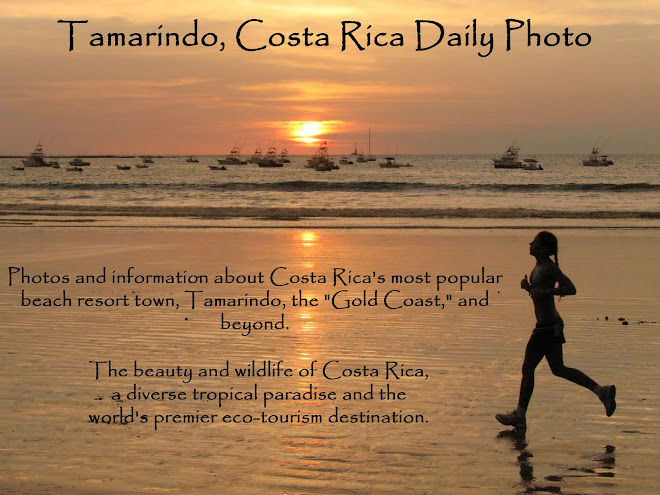
These are typical houses in the village with the Tico lunch shack that I have featured in some of my photos during the past week. These are average houses in a local village without tourist influences. These houses are functional and well maintained.
I have previously posted some photos of upscale condos in tourist areas such as Tamarindo and Langosta. The newspaper last week carried an article that Costa Rica is adopting a progressive property tax law that will increase the property tax rates for more expensive homes and condos. Property tax rates will increase for residences valued at more than $182,000 U.S. dollars, with additional increases at higher levels.
The money raised by the higher property tax rates will be used to provide housing for low income people. Although the taxes will go up on our two condos, I think this is a good idea. It will help people who need better housing. I also think it will promote the good atmosphere that exists in Costa Rica regarding the large number of foreigners who have bought retirement or vacation homes and condos in the country.
Prime beach resorts, such as Tamarindo and Langosta, are now occupied primarily by international residents. I have not noticed resentment by local people, as the development of beach resorts is good for the economy. The progressive property tax should cause Costa Ricans to continue to welcome foreign investment in housing because the tax revenues will directly benefit Costa Ricans most in need of assistance to upgrade their housing.
What do you think of a progressive property tax? I am sure that in the U.S. former Vice Presidential candidate Sarah Palin would say that Joe the Plumber would say that it sounds like socialism. In Costa Rica property taxes are very low, and a modest increase to help improve housing for needy families seems reasonable to me and is a more creative way to raise funds necessary to improve housing conditions for those who otherwise could not afford decent housing.



+P1000527.jpg)


+0120+P1000165.jpg)


+0371+DSCN6403.jpg)
+0368+DSCN6400.jpg)









+P1100220.jpg)


+IMG_0675.jpg)





+0379+P1000479.jpg)

